Low-carbon,
compact electricity generator
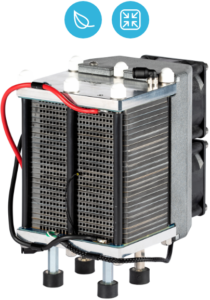
Focus on the OCS range from Pragma Industries
Available
from 100W to 1kW
The OCS fuel cells (Open Cathode System) enable the design of simple and easily integrable systems.
4 models available,
adaptable to your projects
Our OCS packs include :
- • Proton exchange membrane fuel cell (PEMFC)
- • Fan integrated into the casing
- • Temperature sensors
Operating conditions:
- • Ambient temperature: 0°C – 45°C
- • Relative air humidity: 5-100% – optimal: 60%
- • Dry hydrogen (minimum purity 4.5)
Optional:
- • Metal hydride hydrogen tank
- • Adjustable DC/DC converter in 6V steps – 12-60 or 60-120
Hybrids
multiple
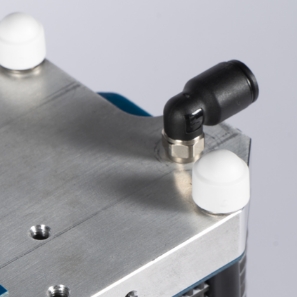

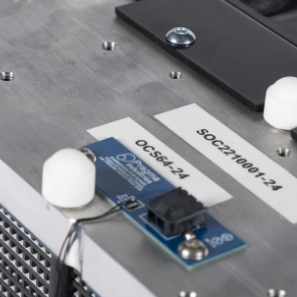
4 models available,
adaptable to your projects
Our OCS packs include :
- • Proton exchange membrane fuel cell (PEMFC)
- • Fan integrated into the casing
- • Temperature sensors
Operating conditions:
- • Ambient temperature: 0°C – 45°C
- • Relative air humidity: 5-100% – optimal: 60%
- • Dry hydrogen (minimum purity 4.5)
Optional:
- • Metal hydride hydrogen tank
- • Adjustable DC/DC converter in 6V steps – 12-60 or 60-120
Multiple hybridizations



4 models available,
adaptable to your projects
Our OCS packs include :
- • Proton exchange membrane fuel cell (PEMFC)
- • Fan integrated into the casing
- • Temperature sensors
Operating conditions:
- • Ambient temperature: 0°C – 45°C
- • Relative air humidity: 5-100% – optimal: 60%
- • Dry hydrogen (minimum purity 4.5)
Optional:
- • Metal hydride hydrogen tank
- • Adjustable DC/DC converter in 6V steps – 12-60 or 60-120
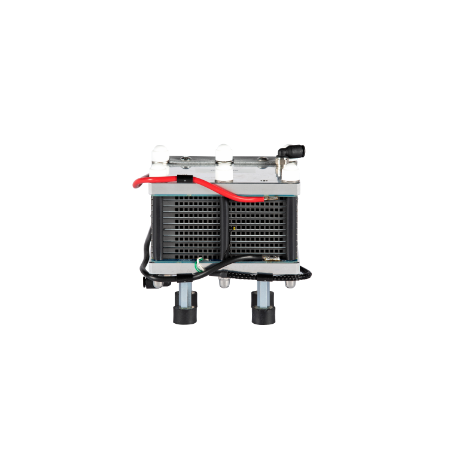
OCS34-10
- POWER 100W
- NOMINAL VOLTAGE 6V
- DIMENSIONS (MM) H : 86 x L : 95 x P : 125
- WEIGHT (KG)0,85
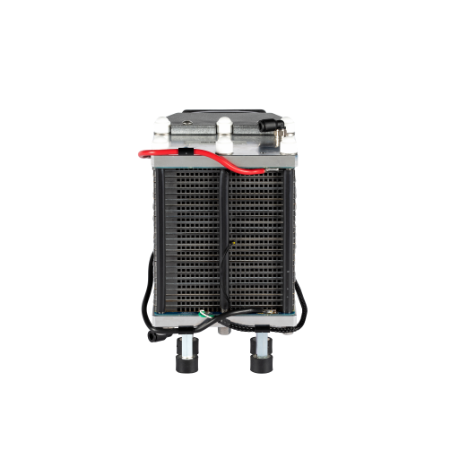
OCS34-25
- POWER 250W
- NOMINAL VOLTAGE 15V
- DIMENSIONS (MM) H : 143 x L : 95 x P : 143
- WEIGHT (KG)1.485
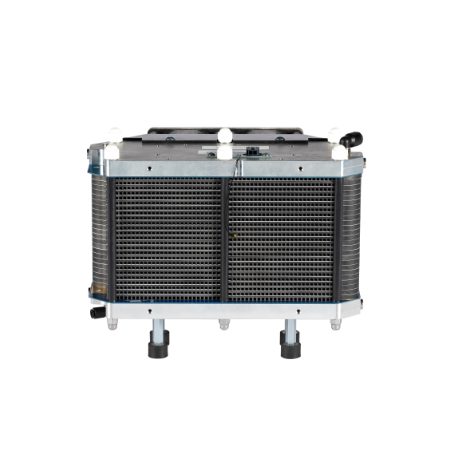
OCS64-24
- POWER 460W
- NOMINAL VOLTAGE 14.4V
- DIMENSIONS (MM) H : 147 x L : 208 x P : 120
- WEIGHT (KG)2.83
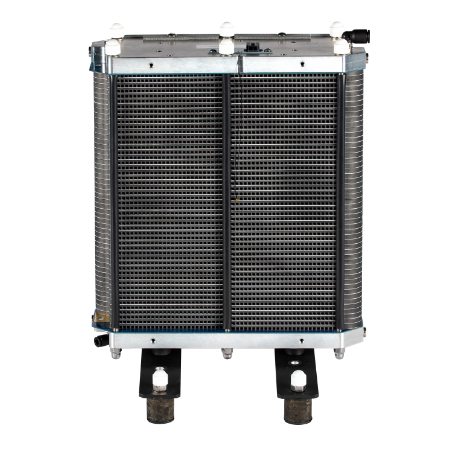
OCS64-50
- POWER 960W
- NOMINAL VOLTAGE 30V
- DIMENSIONS (MM) H : 245 x L : 208 x P : 130
- WEIGHT (KG)4.41
Open cathode fuel cells
with control electronics and power conversion

OCS34-10
- POWER 100W
- NOMINAL VOLTAGE 6V
- DIMENSIONS (MM) H : 86 x L : 95 x P : 125
- WEIGHT (KG)0,85

OCS34-25
- POWER 250W
- NOMINAL VOLTAGE 15V
- DIMENSIONS (MM) H : 143 x L : 95 x P : 143
- WEIGHT (KG)1.485

OCS64-24
- POWER 460W
- NOMINAL VOLTAGE 14.4V
- DIMENSIONS (MM) H : 147 x L : 208 x P : 120
- WEIGHT (KG)2.83

OCS64-50
- POWER 960W
- NOMINAL VOLTAGE 30V
- DIMENSIONS (MM) H : 245 x L : 208 x P : 130
- WEIGHT (KG)4.41
Green electricity production
- zero CO2 and particulate emissions
- 98% reusable components
- Very low use of rare metals and 100% recyclable
- Reconditionable fuel cell by changing the membranes
-
Extended lifespan
(several thousand hours) - Generates no waste
PEM technology at the heart of high-performance H2 fuel cells
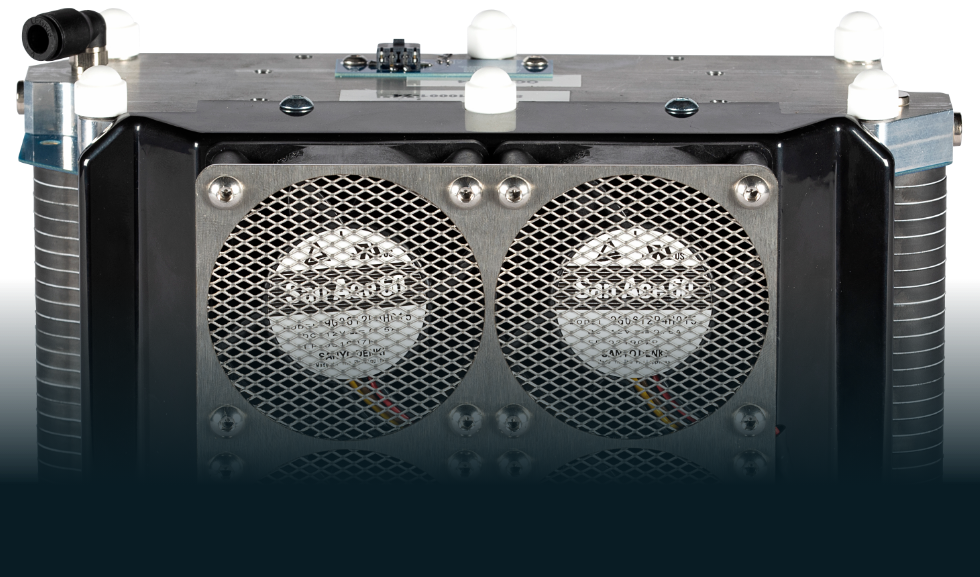
The proton exchange membrane (PEM) fuel cell generates electricity from hydrogen using an electrochemical reaction separated by a membrane.
When in contact with this membrane, hydrogen ions split into protons (H+) and electrons (e-). As the protons pass through the membrane, they create water, and the electrons create electricity.
This fuel cell technology, combined with hydrogen, offers an efficient, low-carbon and environmentally friendly energy and storage solution.
The fuel cell developed by Pragma Industries offers practical applications for electric mobility, as well as for drones and generators.
Fuel cells - Open Cathode Systems
| Name | Design (cm²) |
Rated voltage (V) |
Power (W) |
Height x length x depth (mm) |
Weight (Kg) |
|
|---|---|---|---|---|---|---|
 |
OCS34-10 | 34 | 6 | 100 | H86 x W95 x D125 | 0,85 |
 |
OCS34-25 | 34 | 15 | 250 | H43 x W95 x D143 | 1,485 |
 |
OCS64-25 | 64 | 14,4 | 460 | H147 x W208 x D130 | 2,83 |
 |
OCS64-50 | 64 | 30 | 960 | H254 x W208 x D130 | 4,41 |
Benefits
- High power density
- Solid polymer electrolyte allowing power and energy decoupling
- Easy integration
- Easy reconditioning
- Generates no waste
- No risk of overheating, short circuit, or fire
- Secure storage
- No toxic materials or fumes
- High tolerance to temperature variations

A true innovation laboratory dedicated to light mobility and hydrogen energy.
Pragma Industries is the real-world application of research and development: engineering practically applied to everyday energy solutions. We design and deploy hydrogen-based fuel cells and equipment for cleaner and smarter mobility.
Today and for tomorrow, we move forward at the heart of our environment.

Created by Scenarii
